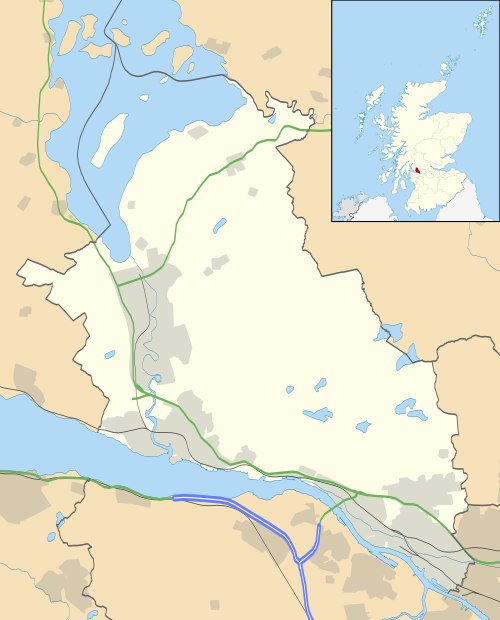Top Qs
Timeline
Chat
Perspective
West Dunbartonshire
Council area of Scotland From Wikipedia, the free encyclopedia
Remove ads
West Dunbartonshire (Scots: Wast Dunbairtonshire; Scottish Gaelic: Siorrachd Dhùn Breatann an Iar, pronounced [ˈʃirˠəxk ɣum ˈpɾʲɛht̪ən̪ˠ əɲ ˈiəɾ]) is one of the 32 local government council areas of Scotland. The area lies to the north-west of the Glasgow City council area and contains many of Glasgow's commuter towns and villages. West Dunbartonshire also borders Argyll and Bute, East Dunbartonshire, Renfrewshire and Stirling.
The council area was formed in 1996 from the former Clydebank district and the eastern part of Dumbarton district, which had both been part of Strathclyde Region.
West Dunbartonshire has three main urban areas: Clydebank, Dumbarton and the Vale of Leven. The area also includes the intervening rural areas, including the Kilpatrick Hills and the south-eastern bank of Loch Lomond. The council is based at 16 Church Street in Dumbarton, although Clydebank is the largest town.
Remove ads
History
West Dunbartonshire was created in 1996 under the Local Government etc. (Scotland) Act 1994, which abolished the regions and districts which had been created in 1975, replacing them with unitary council areas. West Dunbartonshire covered the area of the abolished Clydebank district and the eastern part of Dumbarton district. In a referendum in 1994 the largely rural western part of the old Dumbarton district, including the town of Helensburgh, had voted to join Argyll and Bute rather than stay with Dumbarton.[3][4]
The 1994 act originally named the new district "Dumbarton and Clydebank", but the shadow authority elected in 1995 requested a change of name to "West Dunbartonshire", which was agreed by the government before the new council area came into force.[5][6]
Remove ads
Communities
The area is divided into 17 community council areas, 10 of which have community councils as at 2023 (being those with asterisks in the list below):[7]
- Alexandria*
- Balloch and Haldane
- Bonhill and Dalmonach*
- Bowling and Milton*
- Clydebank East*
- Dalmuir and Mountblow
- Dumbarton East and Central*
- Dumbarton North
- Dumbarton West
- Duntocher and Hardgate
- Faifley*
- Kilmaronock*
- Linnvale and Drumry
- Old Kilpatrick*
- Parkhall, North Kilbowie and Central*
- Renton
- Silverton and Overtoun*
Remove ads
Governance
Summarize
Perspective
The council comprises 22 councillors elected from 6 wards.[10]
Political control
The first election was held in 1995, initially operating as a shadow authority alongside the outgoing authorities until the new system came into force on 1 April 1996. Political control of West Dunbartonshire Council since 1996 has been as follows:[11]
Leadership
The leaders of the council since 1996 have been:[12]
Composition
Following the 2022 election and subsequent by-elections and changes of allegiance up to August 2024, the composition of the council was:[13][14][15][16]
The next election is due in 2027.
Premises
The council is based at the former Burgh Hall at 16 Church Street in Dumbarton. It also has an area office in the main shopping centre in Clydebank.[17]
When the council was created in 1996, it inherited several buildings from its predecessors, including Municipal Buildings and Crosslet House from Dumbarton District Council, Clydebank Town Hall and the nearby Council Offices on Rosebery Place from Clydebank District Council, and the County Buildings, Dumbarton from Strathclyde Regional Council.
The council gradually consolidated its offices, with Crosslet House being demolished in 2015,[18] the Rosebery Place offices being demolished in 2017,[19] and the County Buildings being demolished in 2019.[20]
In 2018 the council consolidated most of its offices to Burgh Hall, which had been vacant for some years. The front part of the 1866 building was retained and a modern office complex built to the rear.[21] The Municipal Buildings in Dumbarton are still used by the council as a register office, whilst Clydebank Town Hall is now primarily an events venue.
Remove ads
Elections
Summarize
Perspective
Since 2007 elections have been held every five years under the single transferable vote system, introduced by the Local Governance (Scotland) Act 2004. Election results since 1995 have been as follows:[11]
Wards

Six multi-member wards were created for the 2007 election, replacing 22 single-member wards which had been in place since the creation of the council in 1995:[26]
Remove ads
Wider politics
Independence referendum
On 18 September 2014, West Dunbartonshire was one of the four council areas which had a majority "Yes" vote in the Scottish Independence Referendum at 54% with an 87.9% turnout rate.[27]
Settlements
Largest settlements by population:
Remove ads
Main sights
- Erskine Bridge
- Dumbarton Castle
- Inchmurrin, the largest freshwater island in the British Isles
- Kilpatrick Hills
- Loch Lomond
- Loch Lomond and the Trossachs National Park
- Overtoun Bridge
- River Leven
References
External links
Wikiwand - on
Seamless Wikipedia browsing. On steroids.
Remove ads












